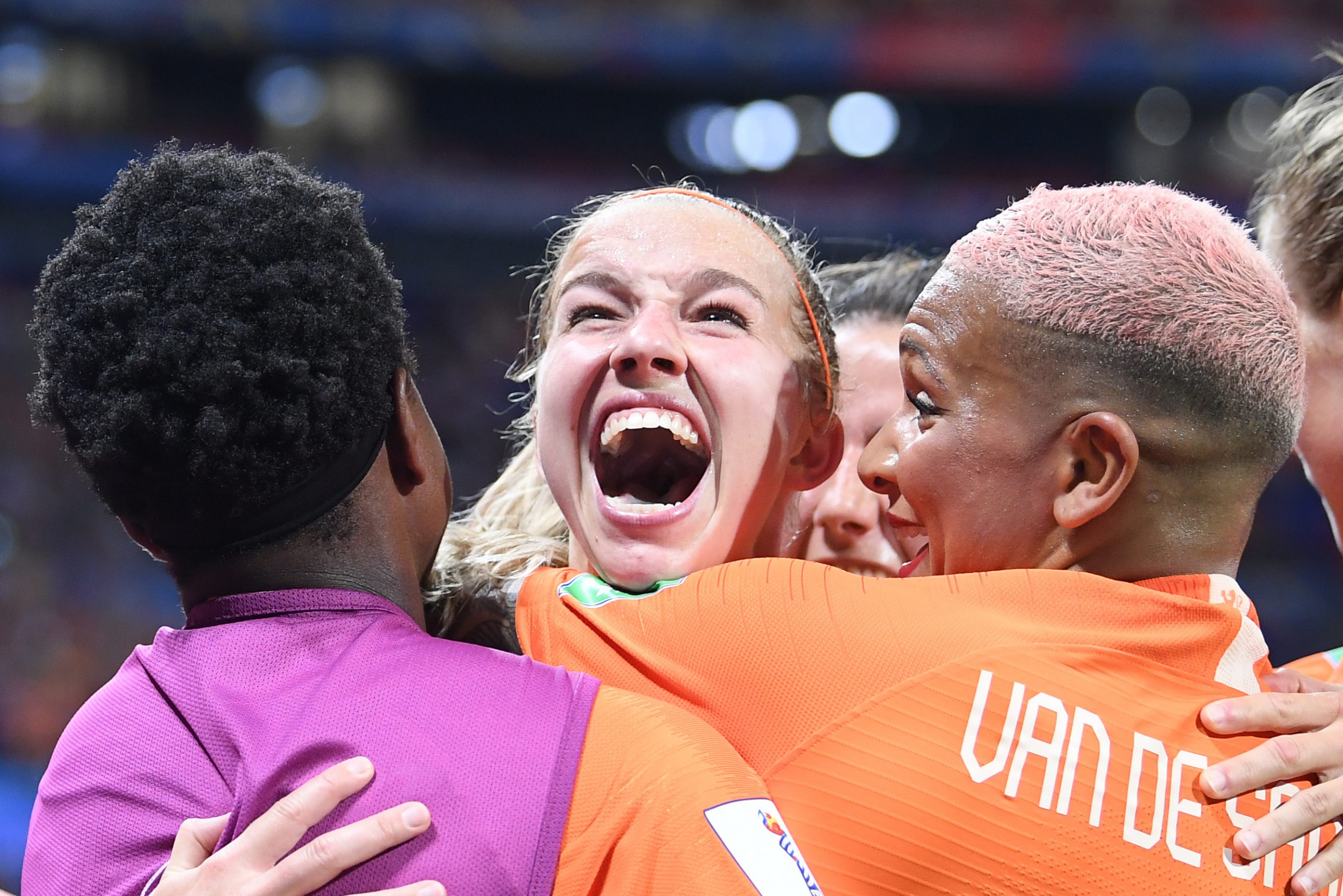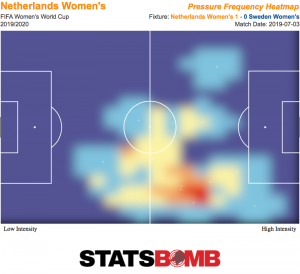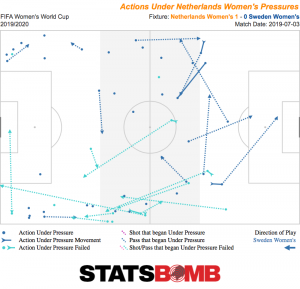Despite their 2017 European Championship success, a roller coaster qualification campaign saw the Netherlands have to face a tough playoff schedule to even make this year’s big stage.
Many, myself included, felt that the 8th ranked team would be overshadowed by the likes of other European giants France, Germany, England and even Spain based on recent exciting fixtures. But the Dutch have prevailed. A Jackie Groenen extra-time 20-yard goal in the 98th minute have seen the Oranje reach the final in their second appearance at the Women’s World Cup.
Although in almost every statistical measure the Netherlands outplayed the Swedes, a slow first half saw Sari van Veenendaal, one of the Netherlands’ Arsenal contingent, the busiest of the goalkeepers in the opening 45 minutes. Sweden creating two decent chances with the keeper having to be alert for both. On the other hand, an isolated Vivianne Miedema and the Netherlands struggled to get into the 18-yard box and had to settle for weak shots from outside the area.
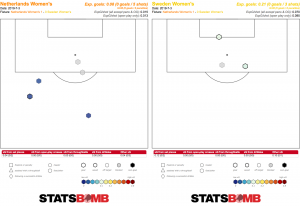
Having escaped Sweden’s early threats, the Netherlands started to settle into their own game plan. Patience and confidence on the ball, completing 74% of 642 passes and a coordinated defensive strategy, were the keys to success. The Dutch also had a wolf-pack mentality, a trend throughout the tournament with the team having the second lowest PPDA only allowing 5.83 passes per defensive action, in addition to having double the pressure regains as Sweden in this semi-final.
The midfield trio of Groenen, Daniëlle van de Donk and Sherida Spitse were dominant defensively, with Spitse willing to put her body on the line and Van de Donk and Groenen tracking back to double down any chance they could. The heat map of defensive actions for the midfield trio compared to the Swedes actions under their pressure show just how effective their defensive pressure was.
Lieke Martens was ineffective in the first half (due to a potential toe injury), with the Dutch getting very little significant output from her on the left. Jill Roord coming on at half time increased the support for Miedema in the second half, and Roord and Van de Donk were both able to occupy the space just underneath Miedema and combine to create more chances. Miedema, not the fastest No.9, is best when she gets the ball at her feet through tight passing combinations in and around the 18 yard box.
The Netherlands' second-half passing network.
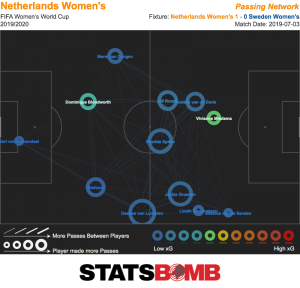
Shanice van de Sanden was the second substitute to come on and replace Lineth Beerensteyn, introducing a formidable player for a tired Magdalena Ericsson to have to defend. Her pace and preference to take a player on one-on-one and get to the byline was evident, although her execution left a lot to be desired. However, the combination of the central support and the increased width that Van de Sanden brought, forcing a gap between the left-back and left-sided centre-back, was key in the game-winning goal. The combination gave Groenen the space to receive the ball unpressured by either Swedish defender and take her shot into the bottom corner.
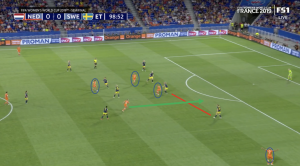
Peter Gerhardsson’s side had some noteworthy tactics in set plays. Sweden were hoping to cause a free-for-all in the six-yard box by crowding this space and making it very difficult for the goalkeeper to cleanly challenge for the ball. It may have been that the Swedes felt at a disadvantage with aerial threats, or perhaps that they felt the Van Veenendaal would make poor decisions under pressure.
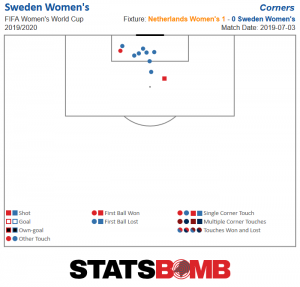
Either way, it was obvious that the intent was to create an environment where they could attack a second ball, and the tactics nearly worked. On more than one occasion, a ball was bouncing along the goal line and it took heroics from the goalkeeper to keep the game tied.
On the Dutch side though, a Miedema header from a corner, in which Sweden were zonal marking, crashed off the crossbar, kept out with the help of Lindahl’s fingertips. Two very different set-piece tactics, yet two of the best chances of the match.
The Netherlands now face a daunting uphill battle. The USA, after having quite the easy draw in the group stages, had an extremely tough European gauntlet to navigate to get to the final. Spain, France and then England all proved testing games for Jill Ellis’ side. The USA are favorites, with the fire power of Alex Morgan and Megan Rapinoe (who have been practicing their celebrations at will) and a goalkeeper in Alyssa Naeher who is coming off the biggest game of her life, with a silent confidence ready to take gold. The defence, on a team level, have only conceded chances worth 0.3 expected goals per game too, an incredibly tight record. Can the Dutch do the unthinkable and extend their title from European champions to world champions? Unlikely, but anything can happen.
